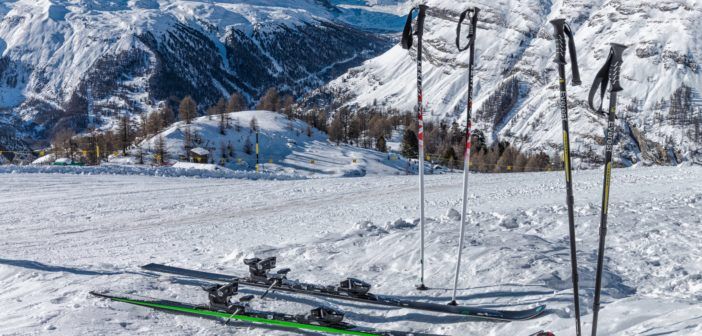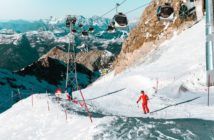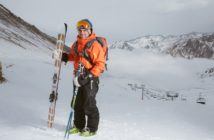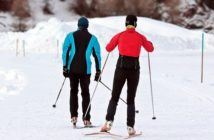Cross country skiing is one of the best ways to experience the glorious, snow-coated regions of the world.
Gliding down the slopes, snow hissing under your skis – there are few more exhilarating ways to explore nature’s wonders.
Skiing itself isn’t hard to get a handle on. Cross country skiing, though, has a few quirks that can knock you for a loop if you aren’t prepared.
How hard is cross country skiing though?
Honestly? Not hard at all! Even beginners will have an easy time of it. While cross country skiing is a full-body workout, it doesn’t require nearly as much skill as alpine skiing.
There are plenty of groomed trails that the kids can go on too!
Of course, learning how to cross country ski is the first step towards exploring the slopes in the best way possible. Let’s get into it!
Contents
How to Cross Country Ski
Depending on which trails you are taking on, you’ll use a number of different techniques to move around. If you are a complete novice, then joining a class should be your first priority.
Of course, reading articles like this is a great starting point, but there is only so much one can learn behind a computer. After you get a general knowledge, it’s worth testing it in practice for the best results!
Beginners may want to start with basic ‘walking trails.’ These are groomed pathways of snow where you just kind of shuffle along at your own pace.
These trails are excellent for getting your feet wet, as it were, and getting used to the skis and poles.
Still, any instructor worth their salt will strongly recommend learning the following two techniques before heading out.
Of course, there are other techniques to master. Learning how to glide, push off, break, fall, and use your equipment correctly will be a huge benefit to you.
The Herringbone
Going uphill is a battle of wills – you vs. gravity. The Herringbone technique may cause you to walk like a spread-legged cowboy, but it gets you up steep slopes with minimal scrambling.
What you’ll need to do is point the tops of the skis outwards, ensuring that the outer edge is angled down, and push forward.
The poles will be really handy here, so be sure that you stab them down with each hard-earned step forward.
If you’re getting into cross country skiing for fitness reasons, then this technique is one to memorize; you’ll have buns of steel in no time at all.
The Snowplow
Just like the Herringbone makes you walk like a cowboy, the Snowplow makes you look like you are busting for the toilet.
No experienced skier will judge you, however, as they know how important these techniques are.
Keep an eye on your friends and family though. No doubt they’ll whip out a camera and snap some embarrassing photos at the first opportunity!
So! This is a good technique for controlling your speed while heading downhill, and one that is good to practice before tackling any trails with steep slopes.
What you need to do is point the top of the skis inward and press the inner edge of the skis into the snow. The harder you press, the slower you’ll go. Bending your knees will give you more stability and control.
This is also a good technique for sculpting some truly impressive leg muscles. You will feel the burn.
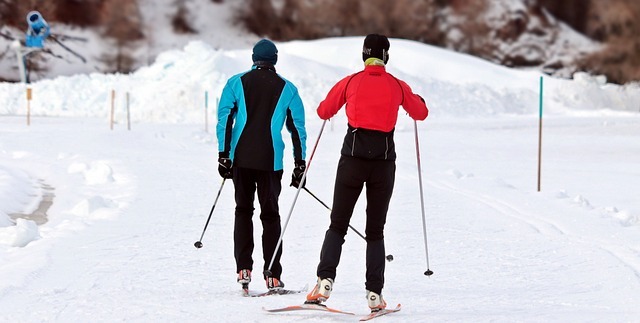
Equipment for Cross Country Skiing
Experienced skiers will tell you that any form of skiing requires proper equipment. Heading out onto the slopes and back-country trails improperly equipped can lead to serious injury!
A number of popular skiing locations have shops where you can buy or rent equipment.
If you are new to skiing, be sure to snatch up a store attendant and get properly fitted – and no, this doesn’t just mean coordinating a snappy skiing outfit.
The vital equipment are:
- Skis (duh).
- Boots.
- Poles.
- Bindings.
If you can’t find a store attendant, learning how to size cross country skis is pretty simple.
These skis are less complicated than alpine skis, as the cross country variant doesn’t need to reinforce the ankles. Nonetheless, getting the right size matters.
No-Wax skis are useful for beginners that just want to jump right into the snow, as they don’t require waxing to create an anti-slip bottom. This comes down to personal preference.
Now, for the rest of the equipment.
Skis
What skis you buy (or rent) will depend on what kind of trails you’re heading out on.
Touring skis are the basic model, good for groomed trails and for skiers that want to mosey along at their own pace.
Metal-edge touring skis are for less groomed trails and those on steep terrain.
They are shorter and wider, offering more stability and fine control, and have metal edges that provide better grip. If you are heading away from groomed trails, then these are what you need.
Race and performance skis are like a rally car version of touring skis. They are made for fast, aggressive skiing – and are not for beginners.
These are the three basic ski models, but there are variations in each class too; what you use will depend on your skill level, weight, and the particulars of the trails you’ll be running.
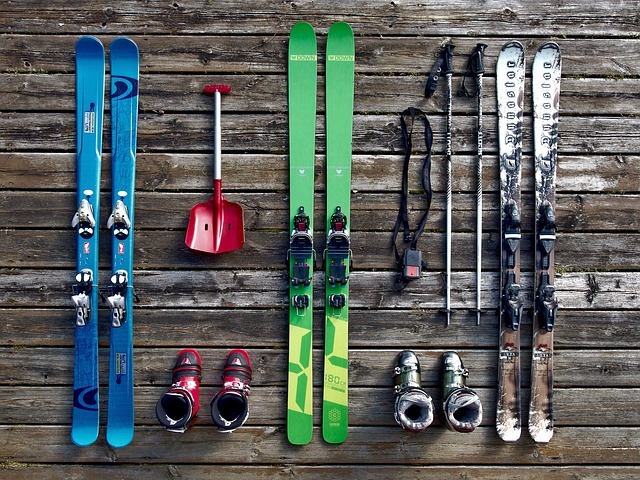
Boots
What boots you get will depend on what skis you are using.
Touring boots are flexible, yet still offer some rigidity around the ankle.
Race and performance boots are lightweight and have a lower ankle cuff, offering a greater degree of motion for those sharp turns.
Metal-edge touring boots are all about armoring up your feet and protecting your ankles.
These boots are stiffer, higher-cut, and more heavily insulated. Perfect for off-the-trail skiing and handling rougher conditions.
Bindings
As these are not alpine skis, you’ll need bindings to keep the skis and boots attached.
Again, there are three main categories for cross country skiing. Touring, race and performance, and metal-edge bindings. What bindings you use will depend on what skis and boots you get.
Poles
Poles just aren’t sticks that you jab in the snow. You’ll be surprised by how much you will rely on poles for extra grip and maneuvering out in the powder (and when your legs feel leaden with fatigue).
Touring poles are strong and light, designed to be used on packed snow and groomed trails.
Race and performance poles are essentially upgraded versions of touring poles so that they can handle more aggressive use.
Poles for metal-edge skis are heavier, more durable, and are built with bigger baskets, so that they can handle ungroomed terrain.
Depending on what the trails are like, you may get poles that are shorter or longer than the average touring pole.
Here’s a video going into more detail on how to cross country ski.
Now, with all of this out of the way, you may be second-guessing the decision to hit the slopes. But listen…
Why You Should Try Cross Country Skiing
Skiing isn’t just for rich couples and people that say ‘those were some radical jumps, dude’ – it’s for anyone and everyone that wants to have some fun.
But, here are some serious reasons why you should give cross country skiing a try.
No Experience? No Problem
As long as you stick to groomed trails, the level of experience you have with the sport doesn’t matter much with cross country skiing.
Jumping right into the sport isn’t going to result in a hospital visit if you take a tumble halfway through the trial, unlike alpine skiing.
You’ll probably fall down a lot, but on groomed trails, the most you’ll hurt is your pride.
No Queues
Alpine skiing usually requires some sort of transport to the top of a mountain, which means (shudder) queues.
In peak holiday and tourist seasons, these lines can mean that you will be waiting for a lift for ages.
Cross country skiing tracks are all over the mountains, many of which you simply walk up. You cannot simply walk into Mordor, but you can certainly walk up a cross country ski track.
Stop and Take in the Scenery
One of the best aspects of cross country skiing is that you can set your own pace.
Snowy mountains and hillsides boast some of the most remarkable scenery in the world, and on cross country trails, you can stop to appreciate the sights.
If you are wondering how much snow is needed for cross country skiing… generally, you’ll want about eight inches of snow on the ground.
Family Friendly
If you are researching for family holiday ideas, then cross country skiing is a great option.
There are parks more geared towards young families, which have groomed, unchallenging trails that little kids won’t struggle with.
Some parks even let you bring the family pooch along!
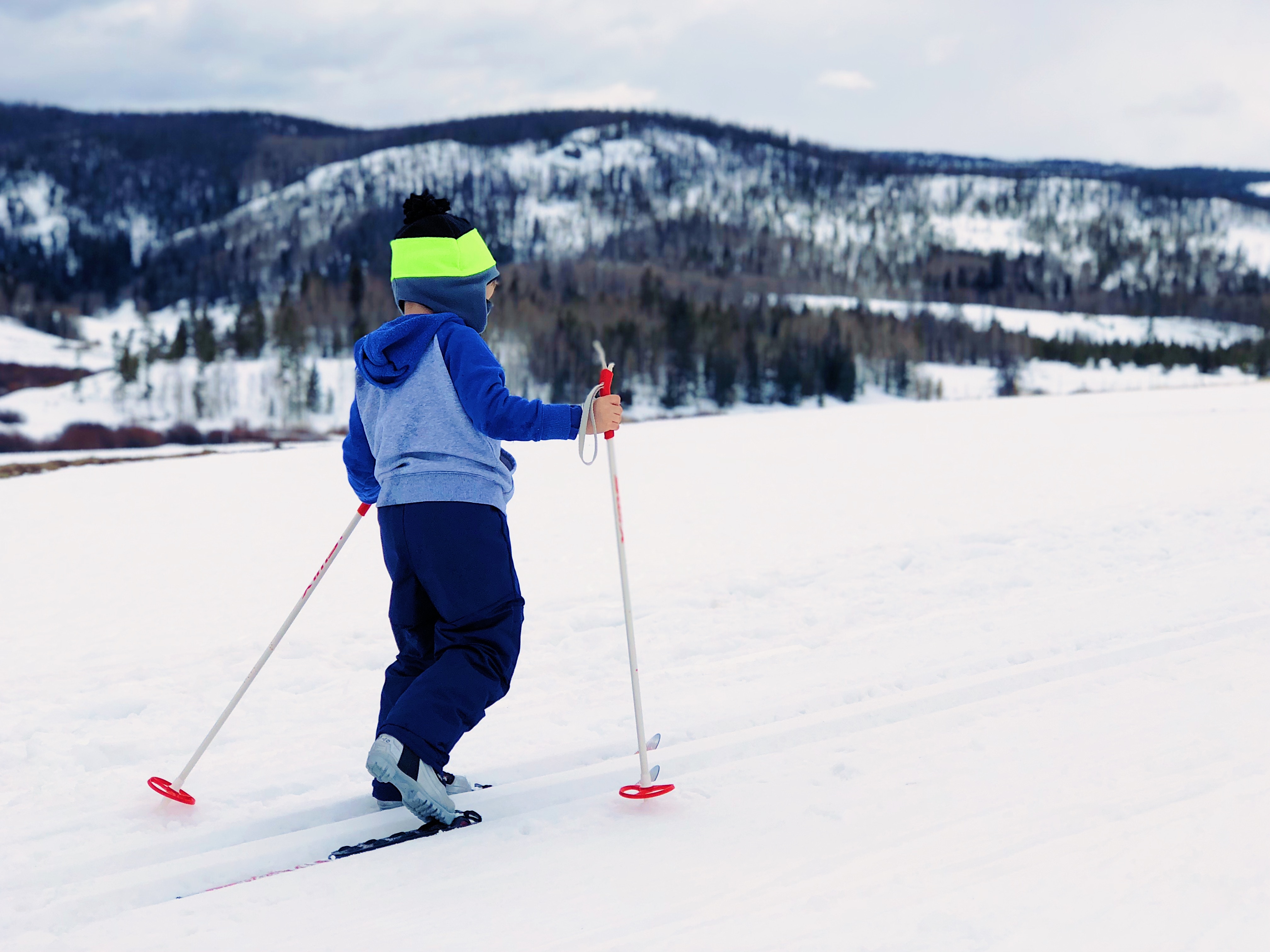
Get in Touch with Nature
Nature is beautiful. Heading out into the snow is a sublime way to push the smell of the city out of your lungs and taste the crisp, cool air of the alpines.
Getting in touch with nature is of one of the greatest perks of cross country skiing.
Exercise
Exempting the family friendly trails, most cross country tracks will burn the calories off way better than a daily half-hour on the treadmill.
Your core, legs, back, and arms will all get pushed to the limit, especially if you are jumping raw into a hard trail. Forget the gym. Just take up cross country skiing and you’ll be fit and toned in no time at all.
Overall, cross country skiing is a great way to explore the snowy regions of the world. You set your own pace, can take the whole family, and don’t need to be an expert skier to have an absolute blast.
Tell us your favorite way to cross country ski!

